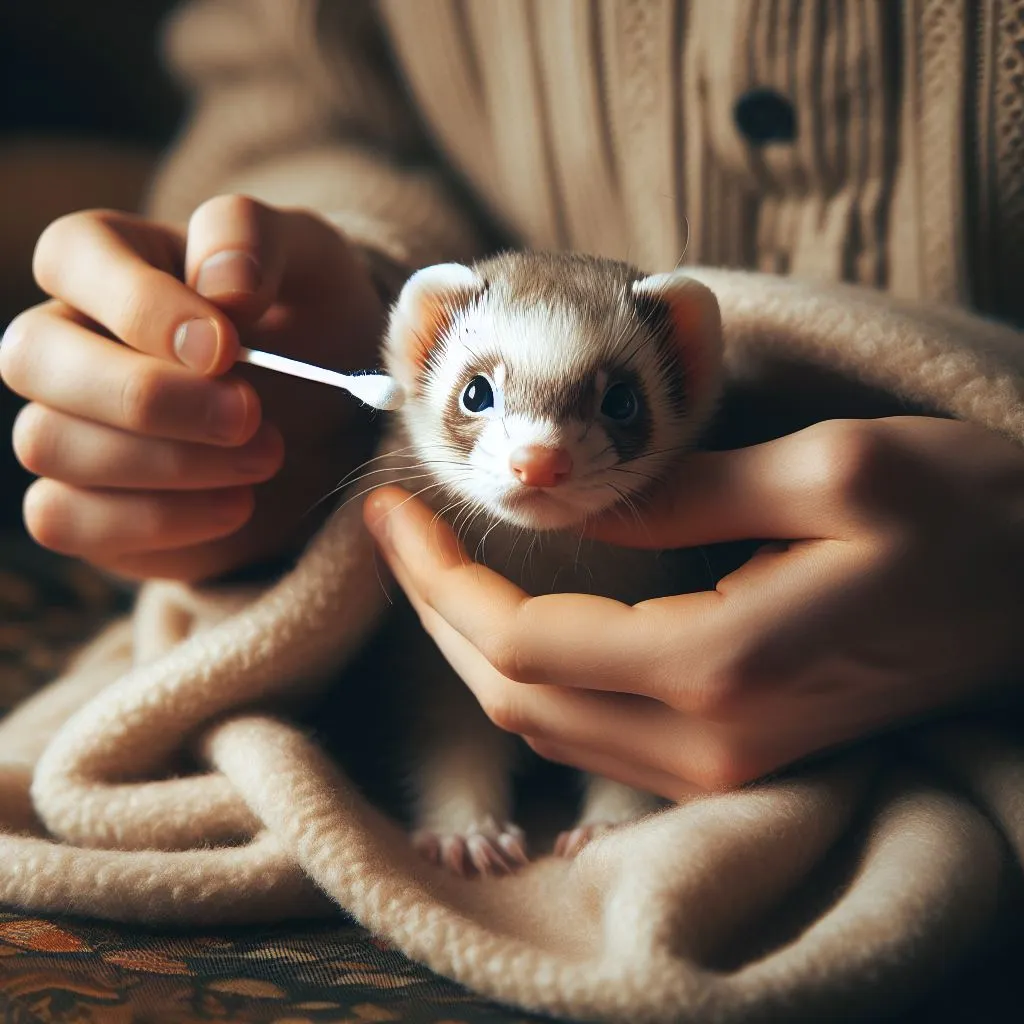Stoat vs Ferret | The 9 Key Differences
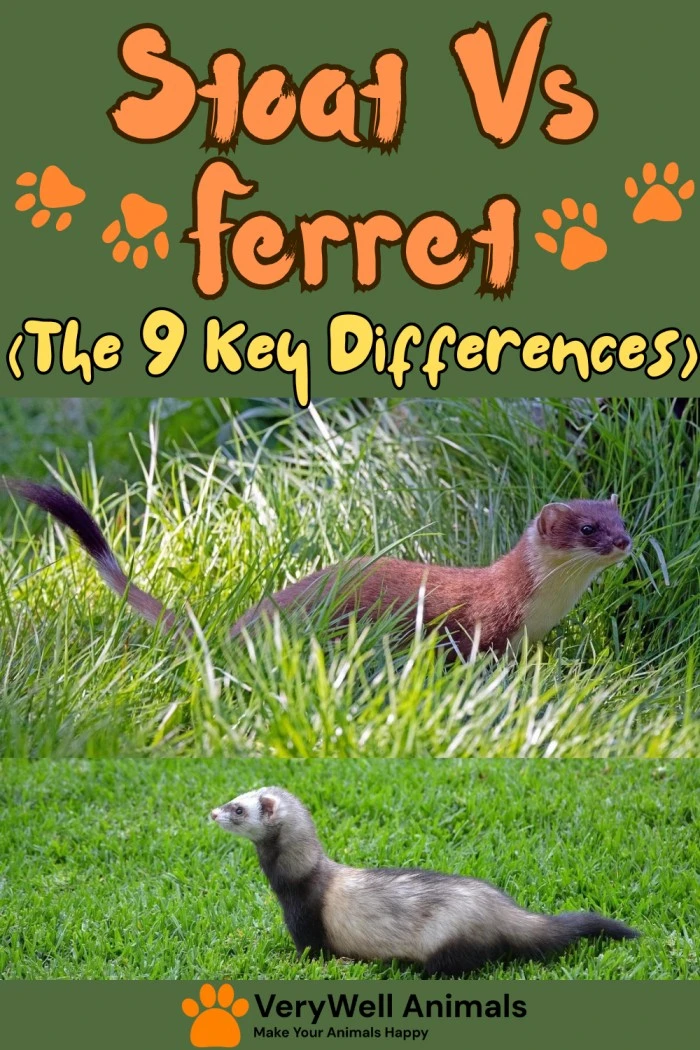
The stoat and the wild ferret often get confused due to their similar appearances. However, there are distinct differences between these two animals, wild ferrets and fox, that set them apart.
The stoat (Mustela erminea) is a slender creature with a long body and a short tail. Wild ferrets have a brown coat in summer, which turns white during winter in colder regions. Known for its agility and speed, the stoat is an excellent hunter of rodents and rabbits.
On the other hand, the ferret (Mustela putorius furo) is larger than the stoat and has a more robust build. Domesticated from wild European polecats, ferrets have been bred for various purposes such as hunting pests or kept as pets. They have a range of coat colors including albino, sable, or silver.
So let’s explore these fascinating creatures further!
Key Differences Between Stoats And Ferrets
| Aspect | Stoats | Ferrets |
|---|---|---|
| Defining Stoats and Ferrets | Mustelidae members known for agility. | Domesticated polecats used for hunting. |
| Physical Characteristics | Slender, 18-24 inches. | Robust, up to 20 inches. |
| Geographic Distribution | Found globally, adaptable. | Native to Europe, introduced worldwide. |
| Behavioral Differences | Climbing, solitary hunters. | Ground-dwelling, can hunt cooperatively. |
| Domestication and Interaction | Not common as pets. | Common pets, trainable for tasks. |
| Diet Preferences | Primarily small mammals. | Broader diet, used for pest control. |
| Role in Ecosystem and Pest Control | Control rodents, impact as invasive. | Contribute to pest control, reduce disease spread. |
| Suitability as Pets or Working Animals | Not recommended as pets. | Common pets, trainable. |
| Popular Culture and Media | Appear in literature, folklore. | Featured in literature, films. |
| Closing Thoughts | Distinct roles, responsible ownership. | Shared ancestry, differences impact roles. |
Topics Covered In This Article
- Defining Stoats and Ferrets
- Physical Characteristics and Appearance
- Geographic Distribution and Habitats
- Behavioral Differences and Hunting Techniques
- Domestication and Human Interaction
- Diet Preferences and Predatory Impact
- Role in Ecosystem and Pest Control
- Suitability as Pets or Working Animals
- Mustelids in Popular Culture and Media
- Closing Thoughts
- Frequently Asked Questions
Defining Stoats and Ferrets
Similarities in the Mustelidae Family
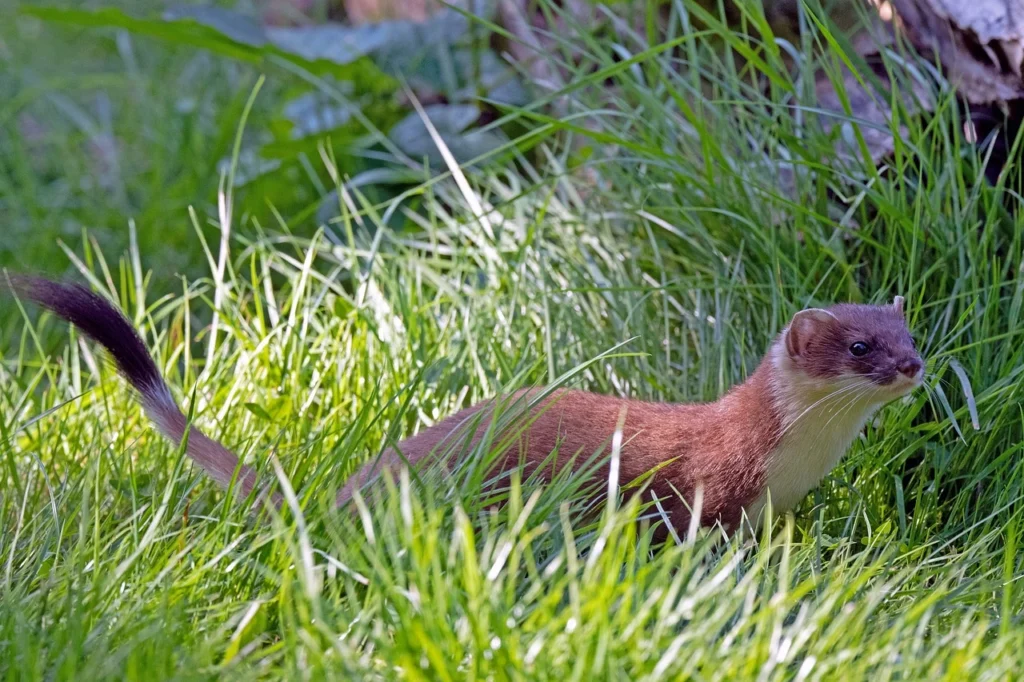
Stoats and ferrets are both members of the Mustelidae family. This family includes various small carnivorous mammals that share common characteristics. These animals have long, slender bodies with short legs and sharp claws. They are known for their agility and hunting skills.
Small Carnivorous Mammals
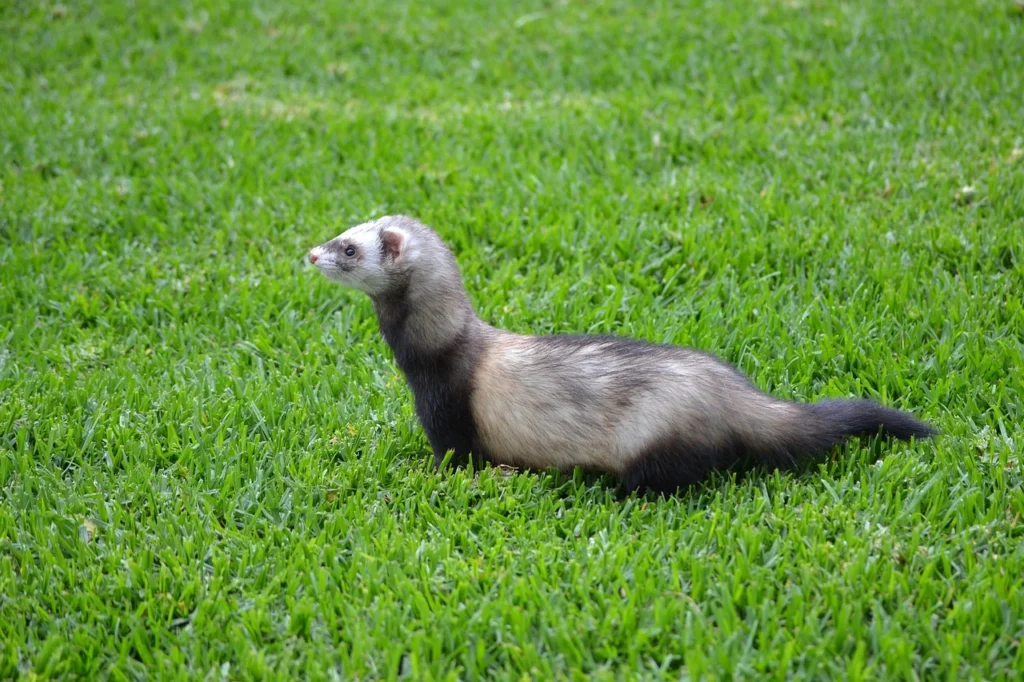
Both stoats and ferrets belong to the category of small carnivorous mammals. This means that they primarily feed on meat, such as rodents, birds, rabbits, and insects. Their sharp teeth enable them to tear through flesh easily when hunting or consuming prey.
Stoats are skilled hunters known for their ability to catch prey larger than themselves by using their speed and agility. They can even take down rabbits several times their size! Similarly, ferrets possess excellent hunting instincts due to their domestication history as working animals used for controlling pests like rats in farms.
Differences in Size
While stoats and ferrets may have similar body shapes, there is a noticeable difference in size between these two creatures. Stoats tend to be smaller compared to ferrets.
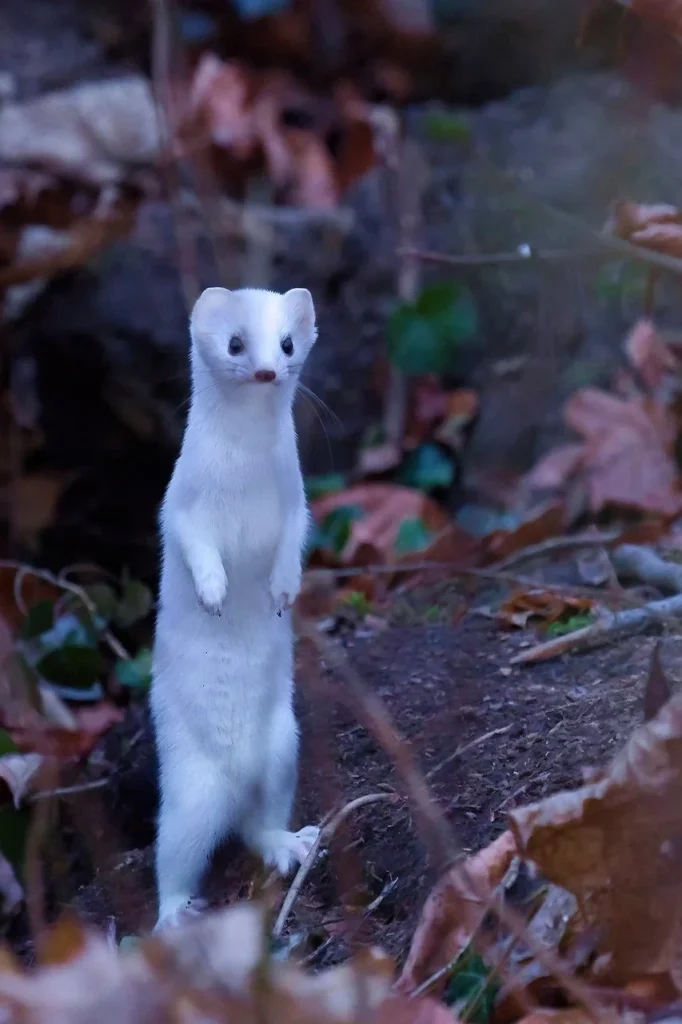
Stoats typically measure around 18-24 inches (45-60 cm) from head to tail with males being slightly larger than females.
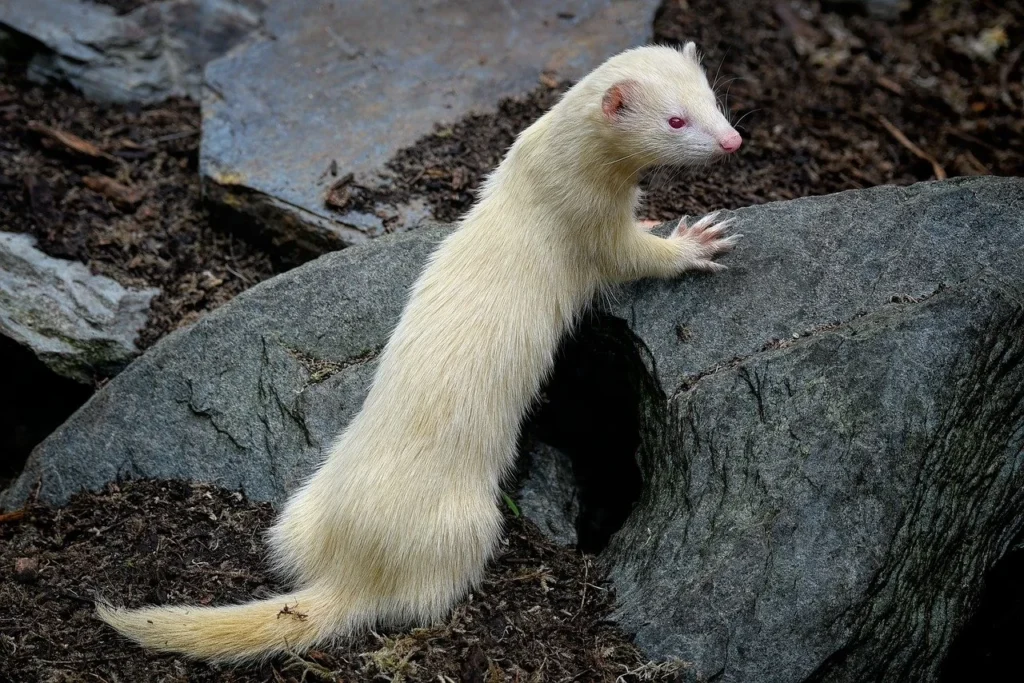
On the other hand, ferrets can grow up to 20 inches (50 cm) or more in length from nose tip to tail base.
The variation in size plays a role not only in physical appearance but also affects certain aspects of behavior and habitat preferences between stoats and ferrets.
Physical Characteristics and Appearance
Slender Body vs Robust Build
Stoats and ferrets have distinct physical characteristics that set them apart.Stoats have a slender build with a long neck, while ferrets have a more robust and muscular physique. This difference in body structure gives each species its unique appearance.
Tail Differences
One of the most noticeable distinctions between stoats and ferrets is their tails. Stoats have a distinctive black-tipped tail that stands out against their reddish-brown coat. On the other hand, ferrets possess a bushy tail that adds to their overall charm. These variances in tail types contribute to the visual dissimilarity between these two animals.
Coat Colors
The coloration of their coats is another distinguishing feature between stoats and ferrets. Stoats typically sport a reddish-brown coat during warmer months, which helps them blend into their natural surroundings.
However, as winter approaches, something remarkable happens – the stoat’s coat undergoes an incredible transformation! It turns white to provide camouflage in snowy environments.
In contrast, ferret coats come in various colors such as brown, white, or even albino variations. Unlike stoats’ seasonal change in fur coloration for survival purposes, ferret coats remain consistent throughout all seasons.
These differences in physical characteristics and appearances make it easier to tell apart stoats from ferrets at first glance.
Geographic Distribution and Habitats
Stoat’s Wide Variety of Habitats
Stoats can be found across North America, Europe, and Asia. They are highly adaptable creatures that have managed to establish themselves in a wide variety of habitats. These habitats include forests, grasslands, tundra, and even urban areas. This flexibility allows stoats to thrive in different environments around the world.
Stoats have the ability to adapt to various climates as well. Whether it’s the freezing temperatures of the Arctic or the hot summers of temperate regions, stoats can survive and reproduce successfully. Their thick fur provides insulation during cold winters, while their slender bodies help them dissipate heat in warmer climates.
Ferret’s Preference for Grasslands and Agricultural Areas
On the other hand, ferrets are native to Europe but have been introduced to other parts of the world due to their popularity as pets. In terms of habitat preference, ferrets tend to favor open grasslands and agricultural areas where they can find ample prey such as rabbits or rodents.
Unlike stoats which exhibit a broad rangeFerrets show a more specific preference for certain types of environments. The abundance of prey species like rabbits in grassland areas makes them ideal hunting grounds for these agile predators.
Ferrets also adapt well within temperate regions with mild climates where they can find suitable conditions for breeding and survival. However, they may struggle if exposed to extreme weather conditions or harsh environments outside their preferred range.
Behavioral Differences and Hunting Techniques
Climbing Ability and Ground-Dwelling Behavior
Stoats and ferrets have distinct behavioral differences that set them apart. One notable difference is their preferred habitats. Stoats are known for their agility and ability to climb trees, while ferrets are primarily ground-dwelling animals. This distinction in habitat preference plays a significant role in their hunting techniques.
Stoop Hunting vs Chasing Prey
Stoats employ a unique strategy called the “stoop.” Stoats use their climbing abilities to their advantage by leaping onto prey from above, delivering a swift attack. This technique allows them to surprise smaller animals like rabbits or rodents from tree branches or other elevated positions.
On the other hand, ferrets rely on their incredible speed and agility on the ground. They chase down prey with remarkable swiftness using bursts of energy. Their streamlined bodies enable them to navigate through tunnels or dense vegetation effortlessly, making them adept at catching small mammals such as rabbits or rats.
Solitary Hunters vs Group Hunters
Another behavioral difference between stoats and ferrets lies in their social tendencies during hunting activities. Stoats are solitary hunters who prefer working alone when pursuing prey. They possess excellent stealth skills that allow them to move silently through various terrains without alerting potential targets.
In contrast, ferrets can be trained to hunt cooperatively in groups with human assistance. These domesticated animals have been utilized for centuries by humans for pest control purposes due to their natural inclination towards teamwork during hunts.
Domestication and Human Interaction
Ferrets as Working Animals and Pets
Ferrets have been domesticated for thousands of years and have a long history of being used as working animals and kept as pets.
They have been bred in captivity to develop traits that make them suitable for specific tasks, such as hunting rabbits or controlling rodent populations. Due to their domestication, ferrets can be trained to perform these tasks effectively.
Stoats: Not Commonly Kept as Pets
On the other hand, stoats are not commonly kept as pets. Unlike ferrets, they have not undergone extensive breeding in captivity to develop traits that make them suitable for human interaction. While some people may keep stoats in captivity under special circumstances, it is not a common practice.
Training Differences
One notable difference between ferrets and stoats is their trainability. Ferrets can be trained to respond to commands and perform various tasks due to their domestication history.
This makes them useful for activities such as rabbit hunting or participating in ratting competitions where they help control rodent populations.
Stoats, on the other hand, are not easily trainable like ferrets. Their wild instincts remain strong even when kept in captivity. They are highly active hunters with excellent agility and cunning skills but lack the ability to follow commands or perform specific tasks like ferrets do.
Care Requirements
Owning a pet requires responsible care regardless of the species involved. However, due to their different histories of domestication and behavior patterns, ferret ownership requires specific care considerations compared to owning a stoat.
Ferret owners need to provide an environment that meets their needs while ensuring safety within a household setting. This includes providing ample space for exercise, appropriate bedding materials for digging instincts, regular veterinary check-ups, proper nutrition tailored specifically for ferrets’ dietary requirements, and socialization opportunities with humans or other compatible animals.
In contrast, stoats are not typically kept as pets, so there is limited information available on their specific care requirements in a domestic setting. It is important to note that stoats have different needs and behaviors compared to ferrets, which may make them unsuitable for most households.
Diet Preferences and Predatory Impact
Stoats’ Diet and Predatory Impact
Stoats have a specific preference. They primarily feed on small mammals like rabbits and rodents. These agile hunters are known for their ability to catch fast-moving prey with their sharp teeth and claws. Stoats are quite skilled at sneaking up on their unsuspecting victims, making them successful predators.
The impact of stoats on prey populations can be significant, especially in areas where they are introduced as invasive species. When stoat populations increase, they can cause a decline in the numbers of rabbits and rodents in an ecosystem. This decrease in prey availability can disrupt the balance of the food chain, affecting other animals that rely on these small mammals for sustenance.
Ferrets’ Diet and Pest Control Abilities
In contrast to stoats, ferrets have a broader diet that includes not only small mammals but also birds and eggs. Due to this versatility in their diet preferences, ferrets are often used for pest control purposes. Their ability to hunt rodents makes them valuable assets.
Ferrets have been employed by humans for centuries as efficient rodent hunters. Farmers sometimes use trained ferrets to keep rat populations under control in barns or storage areas where grain is stored. By releasing ferrets into these spaces, farmers can reduce the number of rats damaging crops or contaminating food supplies.
Furthermore, ferret hunting is also considered a popular sport called “ferreting.” In this activity, people use trained ferrets along with nets or long tubes called “ferret finder” boxes to flush out rabbits from burrows during hunting expeditions.
To summarize:
- Stoats primarily feed on small mammals like rabbits and rodents.
- Stoats can have a significant impact on prey populations when introduced as invasive species.
- Ferrets have a broader diet that includes birds and eggs.
- Ferrets are often used for pest control purposes due to their ability to hunt rodents.
Role in Ecosystem and Pest Control
Maintaining Ecosystem Balance
Stoats and ferrets both have important roles to play. One of the key contributions that stoats make is controlling rodent populations. Rodents, such as rats and mice, can multiply rapidly if left unchecked. This can lead to a variety of problems, including damage to crops and spread of disease.
Stoats are skilled hunters that feed on rodents as part of their natural diet. By keeping rodent populations in check, stoats help prevent these animals from becoming too numerous and causing harm to the environment or spreading diseases. For example, an abundance of rodents can impact bird populations by eating their eggs or competing for food sources.
Pest Control Benefits
Ferrets also contribute to pest control efforts but in a slightly different way than stoats. While they may not directly target rodents like stoats do, ferrets are effective at reducing the spread of diseases carried by these small mammals. By preying on rodents that may be carrying harmful pathogens, ferrets help minimize the risk of disease transmission.
For instance, some rodents carry ticks that can transmit Lyme disease or other tick-borne illnesses to humans and other animals. When ferrets hunt these infected rodents, they effectively remove potential carriers of disease from the ecosystem.
Impact on Native Wildlife
While both stoats and ferrets provide benefits for pest control purposes, their presence can also have negative impacts on native wildlife depending on the context. Stoat predation has been known to affect certain species negatively in areas where they were introduced but did not naturally occur.
In New Zealand, for example, where stoats were brought over by humans many years ago without any natural predators present before then; native birds such as kiwis have suffered greatly due to increased predation rates by stoats.
Similarly with ferrets – although their hunting habits primarily focus on rodents, they can also pose a threat to ground-nesting birds and small mammals in some situations. This is why it’s important to carefully consider the potential consequences of introducing non-native species into different ecosystems.
Suitability as Pets or Working Animals
Ferrets as Pets
Ferrets are commonly kept as pets and can make great companions. They are small animals that belong to the same family as weasels and stoats. One of the reasons why ferrets are popular pets is because they can be trained to use litter boxes, just like cats! This makes them easier to care for indoors.
Not only can ferrets be litter-trained, but they can also learn tricks and commands. With proper training and socialization, these intelligent creatures can become quite obedient and playful. Some people even take their pet ferrets out for walks on a leash!
It’s important to note that while ferrets may look similar to stoats, there are some key differences between the two.
Stoats’ Wild Nature
Unlike ferrets, stoats are not suitable as pets for several reasons. Firstly, stoats have a more wild nature compared to domesticated ferrets. They have specific habitat requirements that cannot be easily met in a home environment.
Stoats need plenty of space to roam around and explore. They require an outdoor enclosure with lots of hiding spots and opportunities for exercise. Trying to keep a stoat confined indoors would go against its natural instincts.
Stoats have different dietary needs compared to domesticated animals like dogs or rabbits. In the wild, they primarily feed on meat such as rodents and birds. It would be challenging (and potentially unsafe) for owners who do not have access or knowledge about providing such specialized diets.
Overall, due to their wild nature and specific habitat requirements, keeping a stoat as a pet is not recommended by experts in animal care.
Regular Exercise and Mental Stimulation
Whether you choose a ferret or decide against having any mustelid species at all (such as the wild natured-stoat), it’s essential to understand that ferrets require regular exercise and mental stimulation to thrive as pets or working animals.
Ferrets are active creatures that need opportunities to run, climb, and play. They have lots of energy to burn! Providing them with toys, tunnels, and interactive activities can help keep them entertained and prevent boredom.
In addition to physical exercise, mental stimulation is also crucial for the well-being of ferrets. Puzzle toys or hiding treats around their enclosure can keep their minds sharp and engaged.
Mustelids in Popular Culture and Media
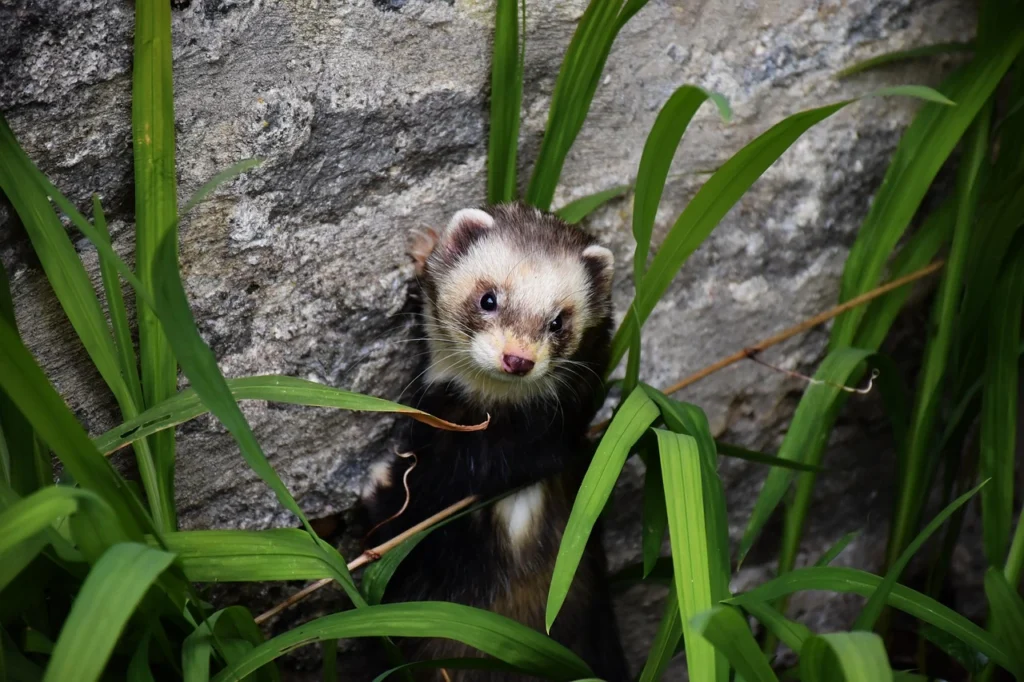
Literature Depictions
Stoats and ferrets have made their way into popular culture and media, captivating audiences of all ages. These small mammals have appeared in various forms of literature, leaving an indelible mark on the pages of books. One notable example is the beloved children’s book “The Wind in the Willows,” where characters like Mr. Toad encounter stoats during their adventures. This portrayal showcases how these creatures can add excitement and intrigue to a story.
Folklore and Mythology
The fascinating winter coat change of stoats has captured the imagination of people throughout history, leading to its depiction in folklore and mythology. In some tales, it is believed that stoats can transform into other animals by shedding their brown summer fur for a white winter coat. This transformation symbolizes adaptability and survival skills, making them an intriguing subject for storytelling.
Film Appearances
Ferrets have also found their place on the silver screen, adding charm to movies with their playful nature. One memorable character is “Weasel” from Disney’s “Who Framed Roger Rabbit.” Weasel brings comic relief to the film as one of Judge Doom’s henchmen. This portrayal highlights ferrets’ mischievous side while showcasing their unique appearance.
These depictions demonstrate how stoats and ferrets capture our attention through various forms of media. Whether they are enchanting us with their presence in literature or entertaining us on screen, these mustelids continue to leave a lasting impression.
Closing Thoughts
In conclusion, stoats and ferrets are two closely related mustelids with distinct characteristics and behaviors. Stoats are smaller and more agile, making them efficient hunters in various habitats. Ferrets, on the other hand, are larger and more muscular, often used for hunting purposes by humans.
Both species play important roles in their ecosystems, controlling pest populations and contributing to the balance of nature. However, their impact on native wildlife can be detrimental if not properly managed.
While stoats and ferrets may share similarities, it is crucial to understand their differences and consider their suitability as pets or working animals. Responsible ownership and conservation efforts are essential to ensure the well-being of these fascinating creatures and the preservation of biodiversity.
Frequently Asked Questions
Stoats and ferrets differ in their physical characteristics, behavior, and habitats. Stoats have a slender body with a black tip on their tail, while ferrets have a more robust build. Stoats are found in various ecosystems worldwide, whereas ferrets are primarily domesticated animals used for hunting or as pets.
Yes, both stoats (Mustela erminea) and ferrets (Mustela putorius furo) belong to the same family of mammals called Mustelidae. They share common ancestors but have diverged into distinct species over time.
While some people may keep stoats as pets, they generally do not make suitable domesticated animals due to their wild nature. Ferrets, on the other hand, have been selectively bred for centuries to be companion animals or working animals in activities such as hunting rabbits.
Both stoats and ferrets are known for their predatory skills that help control pests like rodents. However, they employ different hunting techniques: stoats actively hunt during day and night while prey upon smaller creatures; whereas ferret owners often use them for rabbit control by placing them in burrows where they flush out rabbits.
Stoat’s diet mainly consists of small mammals such as mice or voles along with birds’ eggs if available; occasionally feeding on larger prey when necessary. Ferret’s diet predominantly comprises meat-based products due to their carnivorous nature;
Last Updated on 23 January 2024
Waman Nuka is a seasoned wordsmith and a passionate animal enthusiast with decades of experience in the world of animal care. With a deep love for all creatures great and small, Waman’s journey in the realm of animals started as a young boy exploring the lush forests surrounding his childhood home.


